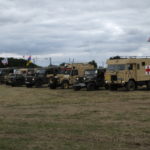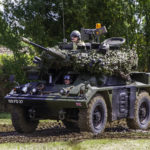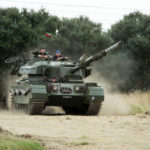Ordnance QF 6-pounder
The quick-fire ( QF ) 6-pounder entered service in 1942 to replace the 2-pounder, although the design had been started before the war, production was paused with the fall of France, and the massive lost of equipment after the evacuation from Dunkirk, with the threat of a German invasion we were still tooled to make the 2-pounder and it was though the delay in swapping overproduction would be too long, with the urgent need for resupplying the British army. production started in November 1941 the first 6-pounders entered service in May 1942.
The 6-pounder or 57mm was mounted on a conventional two-wheeled split trail carriage. The first mass-production variant, the Mk II differed from the pre-production Mk I in having a shorter L/43 barrel, because of the shortage of suitable lathes for manufacture. The Mk IV was fitted with an L/50 barrel, with a muzzle brake. The 6-pounder also was to replace the existing 2-pounder tank guns where turret space would allow and new turrets would be developed for the new gun. The Churchill III and IV alongside the Valentine IX were the first British tanks to be fitted with the new 6-pounder anti-tank gun. When the Cromwell tank went into combat in 1944, it was armed with the Ordnance QF 75 mm gun, which was a redesign of the 6-pounder to take the US 75 mm ammunition and more useful against general targets.
The 6-pounder was followed into production by the next generation British anti-tank gun, the Ordnance QF 17-pounder, which came into use from February 1943. As a smaller and more manoeuvrable gun, the 6-pounder continued to be used by the British Army for the rest of World War II.
Ammunition
The AP (Armoured Piercing round) could penetrate 5.3 Inches 135 mm at 100 meters at 500 meters 4.4 Inches 112 mm at a 1000 meters 3.3 Inches 89 mm
The new APDS round (Armoured Piercing discarding sabot) could penetrate 7 Inches 177 mm at 100 meters at 500 meters 6.3 Inches 160 mm at a 1000 meters 5.5 Inches 140 mm
the 6-pounder could also fire HE (High Explosive) rounds
































